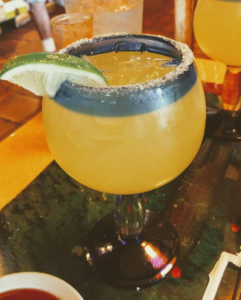The art of Tex-Mex

My life can be measured in the empty bowls of queso left behind in Mexican restaurants, but I realized recently that I don’t know much about the history of Mexican food culture. As a decade-long resident of New Mexico, home of Southwestern cuisine dishes ranging from Del Taco to abuelita’s dinner table, this is probably slightly ridiculous.
So, to catch us all up before we continue this journey of green chili and Christmas pozole, here is a brief overview of the history of Mexican food.
First, the Mayan Indians, traditionally nomadic hunters and gatherers, introduce corn tortillas with bean paste to the world. Then the Aztec Empire throws chili peppers, honey, salt and chocolate into the loop in the mid-1300s before Spain invades Mexico in the 1500s and floods the country with their own set of cultural ideals.
The gist of it is that the tortilla chips and salsa we toy with in our modern era Mexican restaurant is a result of a mass assimilation of different food cultures that have trickled down for centuries and resulted in everything from street tacos to the “Fire Sauce” packets I detest at Taco Bell.
In the U.S., the modern take on Mexican food divides into two main branches: Southwestern cuisine and Tex-Mex. However, a third, if more obscure branch, does exist in Arizona called Sonoran.
Southwestern cuisine is comprised of recipes for foods eaten by Spanish colonial settlers, cowboys, Native Americans and Mexicans and is more popular in southwestern states like Colorado, Utah and, my personal favorite, New Mexico.
Tex-Mex is, as the name suggests, more prominent in Texas, a fusion of U.S. and Mexican cuisine derived from dishes created by Tejanos, Texas residents culturally descended from the original Spanish-speaking settlers of northern Mexico and Texas.
But one of the most important components of Mexican food culture comes down to a single drink: the margarita. Frozen or iced, the margarita is a mixture of tequila, Cointreau and lime, though it’s the salt-rimmed glass that makes it for me.
The history of the margarita boils down to three origin stories that no one can agree on. It was created either by bartender Don Carlos Orozco for Margarita Henkel, daughter of a German ambassador in 1941, by bartenders Carlos “Danny” Herrera and Albert Hernandez for Ziegfeld dancer Marjorie King in a hotel between Tijuana and Rosarito, Mexico or, lastly, by bartender Santos Cruz for singer Peggy Margaret Lee in 1948 at the Balinese Room.
Whatever the case, I recently took a trip down to Cancun Mexican Restaurant in Maryville’s own Foothills Mall and ordered a margarita for the first time. It was amazing. And so was the food.
As a new resident of the Maryville area, I was shocked at the array of Mexican restaurants the town had to offer. Cancun Mexican Restaurant certainly tops my recommendation list, but for different varieties and price options, there’s also Los Amigos, Pancho’s Mexican Restaurant, El Jimador (a Maryville College favorite, known on campus as “the Jimmy”), Margarita’s Mexican Restaurant, El Barril Mexican Grill, Monterrey Mexican Restaurant and even more.
So, celebrate your Margarita Monday the right way by going down to one of your friendly neighborhood Tex-Mex options and offer some cheers to the Mayans for starting this whole spicy fiesta in the first place.

